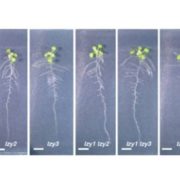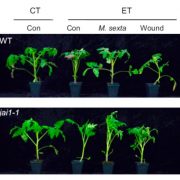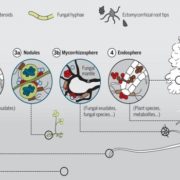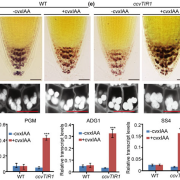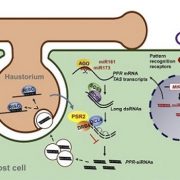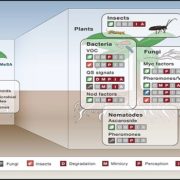How to make a tumour: cell type specific dissection of Ustilago maydis-induced tumour development in maize leaves
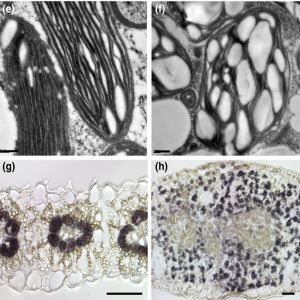 New. Phytol. Ustilago maydis causes corn smut disease on maize which is characterized by plant cancerous symptoms forming tumours on all aerial parts of host. The fungus deploys organ-specific effector proteins to re-program organ primordia to enormous tumours, however the cellular dissection of these symptoms remains unknown. Matei et al. have investigated the origin of these leaf tumours at tissue and cell-specific levels. The authors have analysed cytological and metabolite modulation to understand the cellular basis of tumorigenesis. Cell-type specific transcriptome profiling by laser capture microdissection in U. maydis infection identified bundle sheath cells as origin of hyperplasic tumour cells, while mesophyll cells to be undergoing hypertrophy by cell enlargement. Cell-specific expression of several fungal effectors is seen to be involved in the cell division trigger during tumour formation. Moreover, U. maydis effector See1 was identified as the first cell-specific fungal effector required for cell cycle activation specifically in bundle sheath cells. Hence this work sheds light on the abnormal symptoms that occur in this model phytopathogenic fungus. (Summary by Amey Redkar) New Phytol. 10.1111/nph.14960
New. Phytol. Ustilago maydis causes corn smut disease on maize which is characterized by plant cancerous symptoms forming tumours on all aerial parts of host. The fungus deploys organ-specific effector proteins to re-program organ primordia to enormous tumours, however the cellular dissection of these symptoms remains unknown. Matei et al. have investigated the origin of these leaf tumours at tissue and cell-specific levels. The authors have analysed cytological and metabolite modulation to understand the cellular basis of tumorigenesis. Cell-type specific transcriptome profiling by laser capture microdissection in U. maydis infection identified bundle sheath cells as origin of hyperplasic tumour cells, while mesophyll cells to be undergoing hypertrophy by cell enlargement. Cell-specific expression of several fungal effectors is seen to be involved in the cell division trigger during tumour formation. Moreover, U. maydis effector See1 was identified as the first cell-specific fungal effector required for cell cycle activation specifically in bundle sheath cells. Hence this work sheds light on the abnormal symptoms that occur in this model phytopathogenic fungus. (Summary by Amey Redkar) New Phytol. 10.1111/nph.14960


